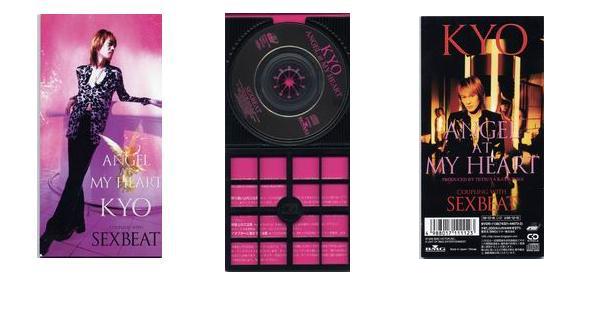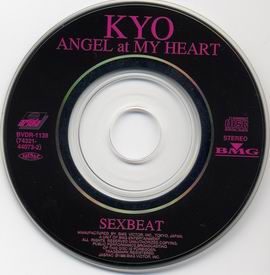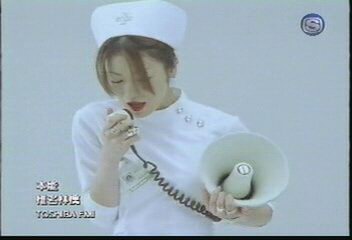
If you have never been exposed to any form of Japanese music, then let MFZ explain what he has understood from how the Japanese music scene operates in general.
Japan is the world's second largest market for music entertainment, and they are huge consumers of their own music as well as every type of music released in this world, whether American or African. The Japanese music industry, well, at least the mainstream Japanese music industry (sometimes derogatorily referred to as J-POP) is no different from other mainstream music industries such as the American or European industries. All of them are profit-driven, and as usual, has the standard product tie-ins, TV spots, heard in commercially released movies, populated by actors-turned-singers and other marketing gimmicks usually found in advanced music scenes. There are some differences, several of which are noted below.
There is a cycle in which a Japanese mainstream artiste would normally operate. Basically, a new Japanese artist will release a single (called a debut single obviously) to gauge the market. There will usually be one or two songs (the second song is called a coupling song, noted by the 'c/w' which stands for 'coupling with'), plus maybe a 'karaoke' track of the title song, released on a small, 8 centimeter in diameter compact disc (designated as CD-Single by Philips and Sony, the creators of the format). Nowadays they have almost phased out the use of this type of CD, though it is making a sort of comeback. Sometimes they may use the regular 12 cm CD format, which makes it a MAXI single. The picture below shows an example of a CD Single. From left to right: the CD single cover, the insides and the back.

The following picture meanwhile shows the actual CD.

The record company would use the main song and probably the c/w song as a television drama or film theme song, or used in TV ads for all sorts of items, from cosmetics to candy, and even medicinal drugs, sometimes with the artiste themselves being the endorsee! All of this is done in the name of marketing the real product (the single itself), to the mass population.
Oh, and contrary to popular belief, anime music are normally NOT considered as J-POP. There may be overlapping incidences, but generally theme songs for popular animes performed by mainstream J-POP artistes can be categorized along with the TV drama theme songs mentioned above.
One popular way to promote new singles is by appearing in music shows on major Japanese TV networks. Appearing on shows such as Music Station, Hey! Hey! Hey! Music Champ, Utaban and others of the same ilk is a good way to promote the songs as the ratings are quite high for these type of shows, so there is good exposure to the target audience.
Of course, we have to thank MTV for introducing the concept of music videos. In Japan, they are called promotional videos, or PVs in short form and yes, that is what they are really, promotional tools to sell more singles and albums. A record company will release a PV for most, if not all singles released by an artiste, and may also release a PV to promote an album. In this case, a track from the album that wasn't released as a single will be filmed as the PV.
The quality of PVs range from high-budgeted 'mini-features' to cheap 'student films', depending on the budget of the record company. The popular artistes may even shoot PVs at exotic or foreign locations, while an indie artiste may use footage from one of their club tours, or simply film it in their garage! As expected, some of these PVs can be very helpful, to the point of turning an otherwise bland song into an interesting one, and some PVs may be simplistic in nature, probably as to not detract from the actual song that it is promoting.
There are specific TV stations that features nothing but PVs, some of the more popular ones would be Space Shower TV, viewsic and MTV Japan. As expected, you can even buy the PVs in video or DVD format from the record companies, either in compilation form or even as DVD singles.

If the single succeeds in the music charts, the artiste may release second and third singles and even a debut album. If all goes well, the artiste will be popular enough to be re-invited to TV shows to sing their hit song (called an encore appearance) or offered the chance to be an actor/actress in a TV drama, and soon the cycle repeats itself with the release of a new single.
The promotion of the artiste can then go to the next level: by organizing nation-wide (and for the REALLY popular ones, international) concert tours or live shows. Venues can range from as large as baseball stadiums such as the Tokyo Dome, to large multipurpose halls such as Nippon Budokan (normally used for sumo tournaments), to dance clubs owned and operated by the record companies themselves. It is up to the management company, together with his/her/their record company to plan this. Usually the smaller or indies-type artistes are the ones who would do club tours, though there have been exceptions.
One problem with concerts and live shows is that the tickets tend to sell out quick, and unless you are a member of the fan club (yet another way to promote the artiste's materials), you are screwed, as some artistes only offer tickets to members of their own fan clubs. Never fear, you can still watch videos or DVDs of concerts of live shows done by the artiste, officially sold by the record companies.

After releasing several hit singles and/or album, the record company may compile several popular tracks from said artistes along with some new or unreleased tracks, and release a 'Greatest Hits' album, which will usually sell more than the total units sold of their previous albums. This is unlike the Western music industry, in which the release of a 'Greatest Hits' album usually signals the retirement of said artiste, or that the artiste is no longer as popular as he/she/they used to be. Usually, the cycle mentioned previously will restart with another new single release right after the release of the 'Greatest Hits' album.

Hopefully this brief (!) introduction is easy to understand. If you want to sample Japanese music without committing to a purchase first, try searching and downloading Japanese music materials from popular file-sharing programs. I would personally recommend soulseek (join the Japanese music room for help, see next page for info) and WinMX (use the powerful search option), these two file-sharing programs tend to have a lot of materials available for download.